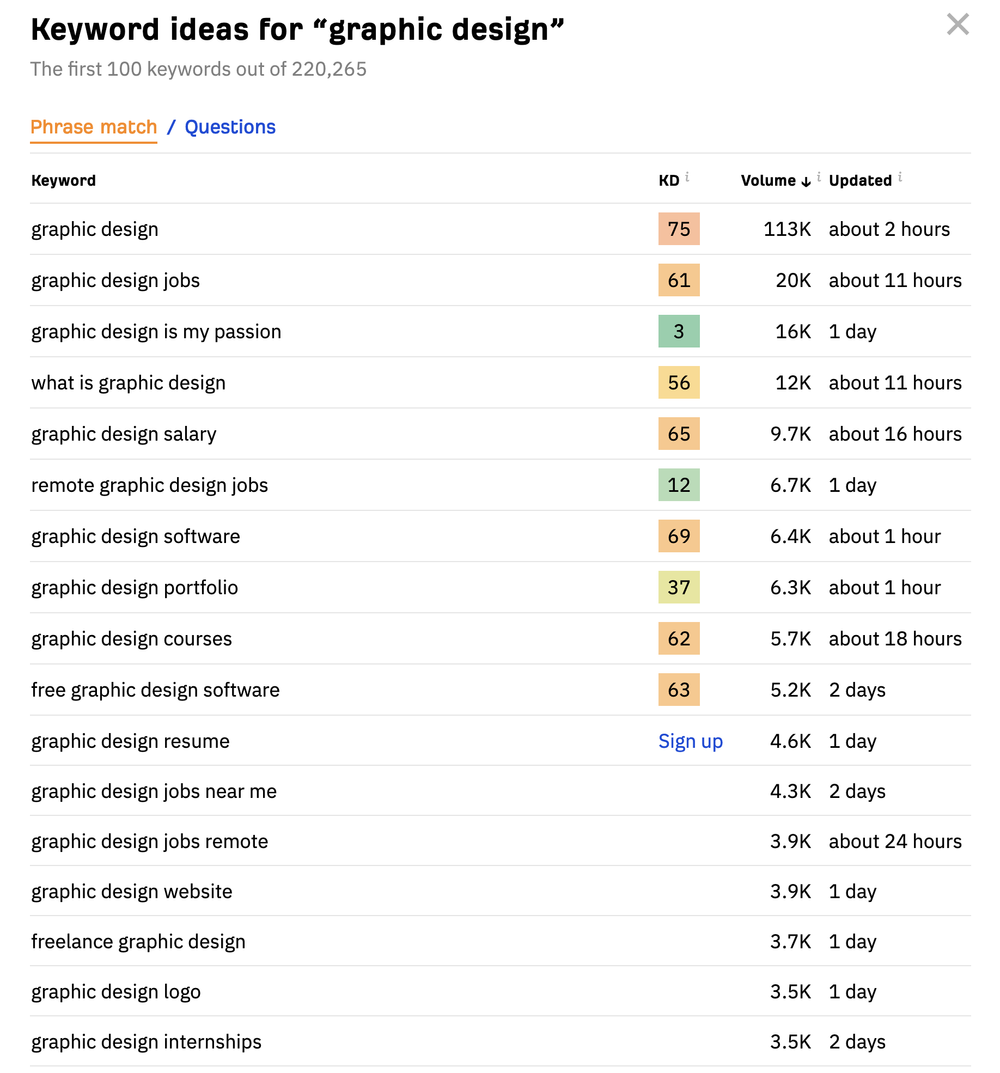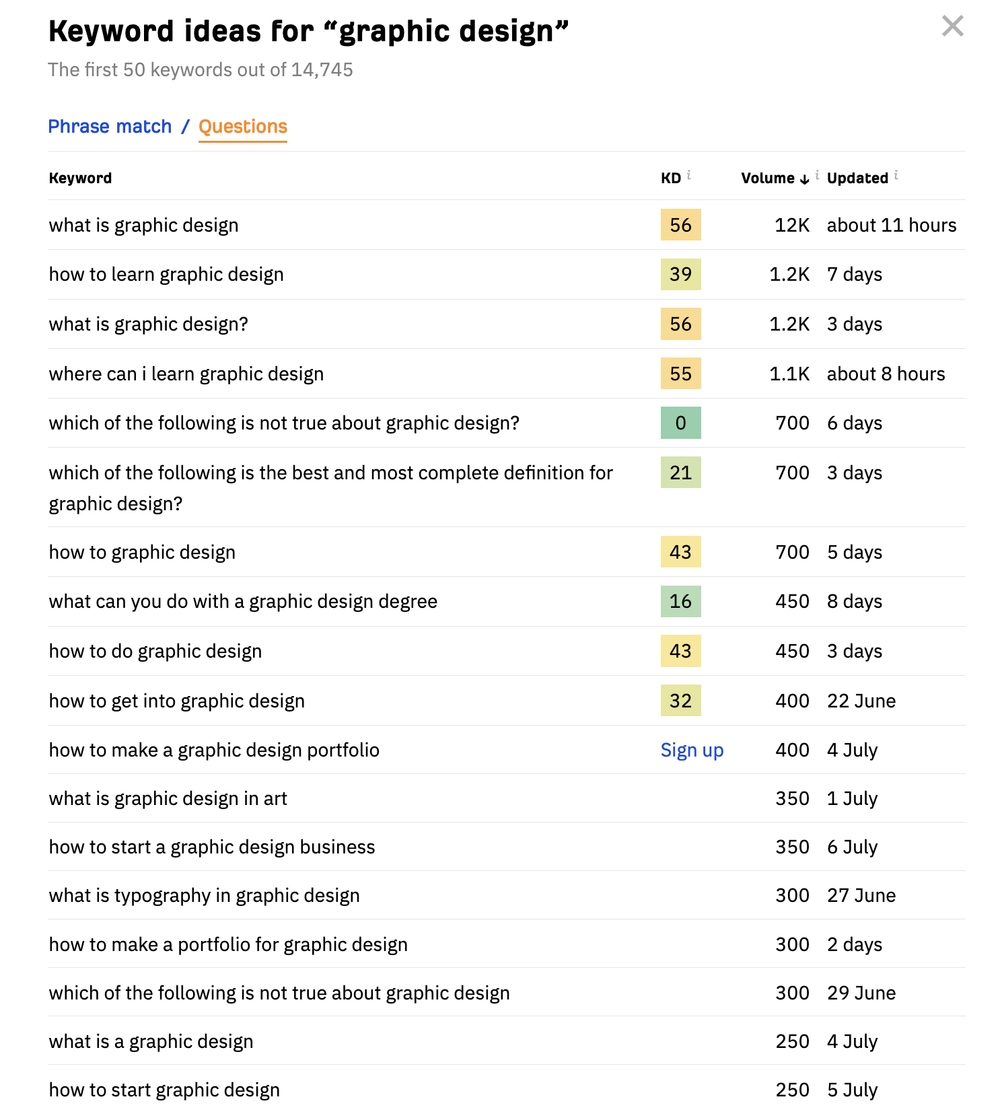KEYWORD RESEARCH 101: 5 STEPS TO FIND PROFITABLE KEYWORDS
SUMMARY
This 5-step framework to conduct effective keyword research will help you boost online visibility, attract targeted organic traffic, and achieve SEO success.
📣 Shout out to our sponsors who keep this newsletter free to the reader:
- JuGo Graphic Design creates remarkable branding that improves your website visitors experience. Contact Julien to create your graphic identity.
- Masterclass 24/7 is the leading Twitter community. Join me and 500+ other creators and entrepreneurs on Masterclass to grow your Twitter audience.
KEYWORD RESEARCH 101
Before we start, note that I have created a free guide on Notion entitled "Keyword Research 101: Step-by-Step Guide To Find Profitable Keywords" which add details and templates to help you perform a keyword analysis and research in the DIY style.
Keyword research is the process of identifying and analyzing specific words and phrases (keywords) that users enter into search engines when looking for information, products, or services. It is a fundamental component of search engine optimization (SEO) and content marketing strategies. Through keyword research, you aim to understand user intent, discover relevant and high-traffic keywords, assess your competition, and use these insights to optimize your website content, improve your search engine rankings, and attract targeted organic traffic.
Effective keyword research will help you to:
- Improve your online visibility → Attract more leads.
- Target more qualified visitors → Increase your conversion rate.
- Analyze you competitors → Differentiate yourself.
- Align your content creation to your audience interests → Build your brand authority.
- Ensure SEO success → Get higher online presence, rankings, and organic traffic.
- Increase your marketing ROI → Avoid continuous advertising spend.
Note: I only used free tools or the free version of freemium tools in this guide to enable every solopreneur, entrepreneur, freelancer, or small business to start improving its SEO at no cost. ❤️
STEP 1: DEFINE CUSTOMER INTENT
First of all, it is crucial that you get into the shoes of your customers. As such, defining your customers intent will help you select the right keywords to target. I’m assuming here you already have done a proper market research and know your target audience.
Customer intent, also called user intent or search intent, refers to the underlying motivation or purpose behind a user's search query. It categorizes search queries into informational, navigational, commercial, or transactional intents, and understanding user intent helps in creating relevant and valuable content.
WHAT ARE YOUR LEADS TRYING TO ACHIEVE?
Define the customer intent category, listed below by chronological order within the sales funnel.
- Informational Intent: Leads want to find answers to their questions.
- Navigational Intent: Leads want to find specific pages, websites, or physical stores.
- Commercial Intent: Leads want to analyze specific products, services, offers, online stores, or brands.
- Transactional Intent: Leads want to achieve a conversion (purchase, subscription, account creation…).
Acknowledging the customer intent category defined above, what are your customers trying to achieve specifically?
IN THEIR SHOES, WHAT WOULD YOU TYPE IN THE SEARCH ENGINE BAR?
Generate a list of keywords, questions, etc. you would type in the search bar to find what your leads are trying to find.
STEP 2: BRAINSTORM KEYWORDS
BRAINSTORM THEMES
Based on your current knowledge, brainstorm a list of core themes for your business.
🧠 Themes (e.g. for a graphic design freelancer)
- Theme 1: “graphic design”
- Theme 2: “visual communication”
- Theme 3: “social media influence”
- Theme 4: …
BRAINSTORM TOPICS
Generate a list Based on your current knowledge, previous market research, and existing SEO reports you may have, brainstorm a list of topics for each of the themes you defined above.

BRAINSTORM KEYWORDS
Leveraging the themes and topics listed above, unleash your brain and list all the keywords (words, set of words, sentences, questions…) you think are used by your leads to find your products and services.
🧠 Keywords
- ...
- ...
Google Keyword Planner and SEMrush Keyword Magic Tool are great tools to both brainstorm and generate data-backed keywords.
STEP 3: ANALYZE COMPETITOR’S KEYWORDS
LIST YOUR TOP 3 COMPETITORS
Find your 3 most relevant competitors and list them and their website.
PERFORM COMPETITOR RESEARCH
Use SEMrush or Ubersuggest to perform competitor analysis. You will obtain their organic search positions and data for their top keywords. Results will be displayed such as (e.g. nike.com, with SEMrush):

PERFORM COMPETITOR ANALYSIS
Analyze the keyword positioning and strategy from your competitors thanks to your competitor research.
To nourish your thinking:
- Do they position themselves on their own brand name?
- What is the customer intent of those keywords? One category in particular they focus on?
- What is the meaning of those keywords? Does a specific theme or topic appears (e.g. industry-related, product-related, trend)?
- Do some keywords drive significantly more traffic to their website than the others?
- Do they use local terms (e.g. city names, specific locations)?
- Do they use a lot of Search Engine Results Page (SERP) features (e.g. reviews, maps)?
- Are some of those keywords relevant for your specific objective?
- If yes, how competitive would it be for you to position your website on those keywords?
DETERMINE NEW KEYWORD IDEAS
Based on the top keywords from your 3 competitors and your analyses, determine new keywords you can target. These keywords can be directly those from your competitors or keywords generated based on the keywords of your competitors.
STEP 4: DISCOVER KEYWORD OPPORTUNITIES
Use Ahrefs Keyword Generator or KeywordTool.io to list long-tail keywords, question-based queries, and related terms that present opportunities for content creation and keyword positioning.
To illustrate how to perform a keyword discovery, I used the seed keyword "graphic design" with Ahrefs Free Keyword Generator Tool.
You can discover both "phrase match" and "questions" keyword ideas and their data.


STEP 5: DEFINE YOUR KEYWORDS
GUIDELINES
Based on the brainstormed keywords during all the steps of this guide, define the keywords to be targeted by your SEO strategy.
In order to rightly select the keywords, read these guidelines:
- Your chosen keywords should have a balance between search volume and competition level, aiming for keywords with moderate to high search volume and manageable competition.
- If you have a small business, you may include some lower search volume keywords if they are particularly relevant and on target.
- Your selected keywords should align with your business goals, target audience, and content strategy.
- Long-tail keywords should be included to target specific niche audiences and capture more targeted organic traffic.
- Your keyword list should cover a wide range of relevant topics and search intent, ensuring comprehensive coverage of your industry.
- Your selected keywords should have the potential to drive relevant and high-converting traffic to your website.
LIST YOUR KEYWORDS WITH DATA
List all the keywords you've found in the previous steps.
Associate key metrics such as search volume, competitiveness, customer intent, and relevance for each keyword. Use Google Keyword Planner, SEMrush Keyword Magic Tool, and/or Ahrefs Keyword Generator to gather such data.

PRIORITIZE YOUR KEYWORDS
From the table of keywords that you have just created, select all the meaningful keywords by the guidelines from the section 1 of this step 5. In addition, leverage the constraints below to discard the non-important keywords.
Constraints:
- 1. If a keyword is not highly relevant for your business → discard the keyword.
- 2. If the customer intent of the keyword is not aligned with your business objective → discard the keyword.
- 3. If the competition level for a keyword is too high (assuming you have a small business so limited resources) → discard the keyword.
- 4. If the search volume is not medium or high → discard the keyword, unless you have a particular interest for this keyword (e.g. your brand name, your personal name, specific name of a product you sell, etc.)

FINALIZE YOUR LIST OF KEYWORDS
Because your resources are limited, you will focus your efforts on a few keywords only.
Select your top 10 keywords, mixing head keywords (3 words max), long-tail keywords (4+ words, questions, sentences), that belong to the previous table and for which you would like to position you business.
In addition, for content creation purposes, select 10 secondary keywords falling short of being ranked in the list above but very close to being part of it. You can leverage these to create new content on your blog or public newsletter on your website for example. In case you can extend your SEO activities by extending your SEO capabilities, these will be the next keywords to target.
CONCLUSION
You have explored the essential steps to conduct effective keyword research for your business. By understanding the importance of keyword research, defining your target audience, and brainstorming relevant topics, you can generate a comprehensive list of seed keywords. Conducting competitor analysis and utilizing keyword research tools further expand your keyword list. By prioritizing and optimizing your content with high-impact keywords and adapting your strategies based on key metrics, you can enhance your online visibility, attract targeted organic traffic, and outshine competitors.
Keyword research is an ongoing process that requires continuous refinement and adaptation. With this knowledge, you're now equipped to propel your business forward and achieve SEO success.
Remember that I have created a FREE guide on Notion entitled "Keyword Research 101: Step-by-Step Guide To Find Profitable Keywords" which add details and templates to help you perform a keyword analysis and research in the DIY style. Stay tuned on my Twitter account.
4 Ways I Can Help You
- 1. Get leads with SEO -> The Complete SEO Course.
- 2. Prefer SEO done for you? Get your free SEO consultation.
- 4. Enjoy my newsletter, blog, freebies, and testimonials.
Latest Blog Articles
EXOGN
Contact Us
EXOGN - SEO Agency & Training
Nicolas Pizzo
24, rue de la Station
94170 Le Perreux-sur-Marne
France
COURSES
SEO
Off-Page SEO
Local SEO
Copyright 2024 EXOGN - SEO Agency & Training


